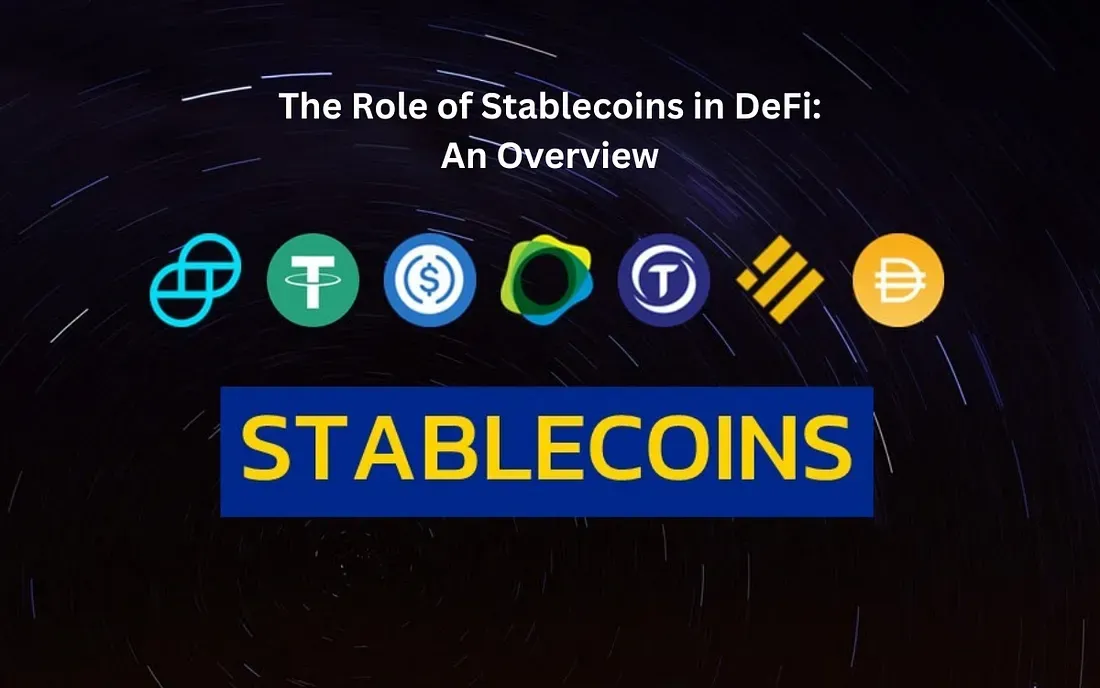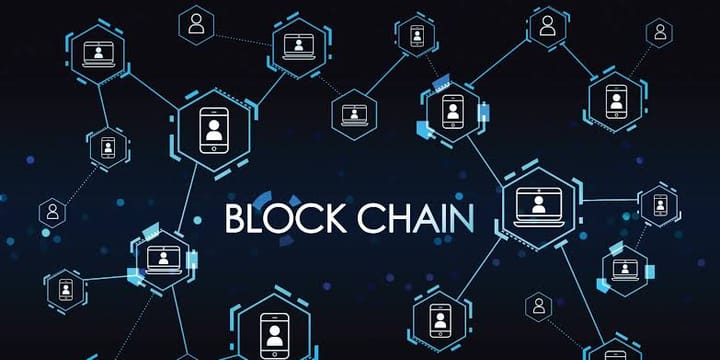The Crucial Role of Stablecoins in Decentralized Finance (DeFi)

Decentralized Finance (DeFi) has quickly evolved from a niche innovation to a mainstream force reshaping the global financial system. By leveraging blockchain technology, DeFi eliminates intermediaries, offering open, permissionless financial services. At the core of this revolution lies an often-overlooked but essential component: stablecoins. These digital assets, designed to maintain stable values through pegging to fiat currencies or commodities, are a linchpin that ensures DeFi’s smooth functionality, scalability, and widespread adoption. In this article, we’ll explore the importance of stablecoins in DeFi, their types, applications, challenges, and their potential for the future.
What Are Stablecoins?
Stablecoins are digital currencies designed to mitigate the inherent volatility of cryptocurrencies like Bitcoin or Ethereum. Their primary feature is the ability to maintain a stable value, typically pegged to fiat currencies (like the US dollar) or commodities (such as gold). The stability they offer is crucial for enabling wider adoption and application in DeFi, where volatility can pose significant risks.
There are several types of stablecoins:
- Fiat-Collateralized Stablecoins: These are backed 1:1 by a reserve of fiat currency, stored with trusted custodians. Examples include USDT (Tether) and USDC (USD Coin), which dominate the DeFi space due to their liquidity and ease of use.
- Crypto-Collateralized Stablecoins: These stablecoins are backed by other cryptocurrencies, often over-collateralized to manage market fluctuations. A well-known example is DAI, created by MakerDAO, which is fully decentralized and governed by the community.
- Algorithmic Stablecoins: Instead of being backed by collateral, these stablecoins rely on algorithms to regulate supply and demand in order to maintain their value. Although promising, algorithmic stablecoins like TerraUSD (UST) have encountered significant challenges, such as their catastrophic collapse in 2022.
- Commodity-Collateralized Stablecoins: Pegged to tangible assets such as gold, these stablecoins provide a hedge against inflation or economic instability. PAX Gold is an example of this type of stablecoin.
Stablecoins function as a bridge between the volatility of cryptocurrencies and the stability of fiat currencies, making them indispensable for DeFi applications.
Stablecoins in DeFi: The Heartbeat of a New Financial System
DeFi encompasses a wide range of financial activities—lending, borrowing, trading, and more—executed on decentralized networks like Ethereum, Binance Smart Chain, and others. Stablecoins are integral to these systems for several reasons:
- Stability in a Volatile World
Cryptocurrencies like Bitcoin and Ethereum experience large fluctuations in value, which can be a barrier to their use in financial transactions. Stablecoins offer a predictable value, enabling users to engage confidently in DeFi activities. Whether borrowing on Aave or trading on Uniswap, stablecoins like USDC give users peace of mind knowing their assets won’t lose value due to erratic market swings. - Liquidity and Market Efficiency
Decentralized exchanges (DEXs) such as Uniswap and Curve rely heavily on stablecoins to provide liquidity. Stablecoin pairs (e.g., USDC/USDT) are often preferred because they offer lower slippage and more predictable outcomes for traders. In fact, a significant portion of DeFi’s Total Value Locked (TVL) is dominated by stablecoins, underlining their role in maintaining liquidity and market stability. - Lending and Borrowing with Confidence
DeFi lending platforms like Compound and Aave are powered by stablecoins, allowing users to lend, borrow, or earn interest with reduced exposure to market volatility. By using stablecoins as collateral, borrowers can avoid the risk of liquidation that could arise from the drastic price swings of volatile cryptocurrencies. - Global Transactions and Remittances
One of the standout features of stablecoins is their ability to facilitate cross-border transactions at low cost and high speed. DeFi protocols enable near-instant, frictionless transactions across the globe, offering a valuable alternative to traditional remittance systems, especially in countries with unstable currencies. - Yield Farming and Staking
Yield farming and staking are key components of DeFi’s allure, allowing users to earn returns on their assets. Stablecoins play a pivotal role here, as they minimize the risk of impermanent loss—the phenomenon where liquidity providers lose money due to price changes in the assets they supply. Platforms like Curve Finance focus on stablecoin-based pools, offering safer options for yield-seekers. - Programmability and Composability
Stablecoins are highly programmable, which makes them an ideal fit for DeFi’s ecosystem. They are easily integrated into smart contracts that execute automated financial services, such as flash loans, automated market makers (AMMs), or synthetic assets. For example, USDC’s compatibility with Ethereum’s ERC-20 standard enables seamless interoperability across DeFi platforms.
Types of Stablecoins: Centralization vs. Decentralization
There’s a growing diversity of stablecoins, each designed to meet different needs within the DeFi space:
- Centralized Stablecoins (e.g., USDT, USDC): These are issued by centralized entities, and while they provide stability and liquidity, they come with concerns about transparency and reserve management.
- Decentralized Stablecoins (e.g., DAI): Backed by crypto collateral and governed by decentralized communities, decentralized stablecoins are considered more trustless but may face issues related to scalability or market fluctuations.
- Algorithmic Stablecoins: Although designed to operate without collateral, these have faced significant challenges in maintaining their peg. The collapse of TerraUSD in 2022 serves as a stark reminder of the risks associated with this model.
Each type of stablecoin has its advantages and trade-offs, from centralization and counterparty risks to the potential scalability challenges of decentralized models.
Challenges Facing Stablecoins in DeFi
Despite their importance, stablecoins in DeFi are not without challenges:
- Regulatory Uncertainty: Governments are increasingly focusing on regulating stablecoins, especially centralized ones like USDT and USDC. Regulations could reshape the landscape, potentially limiting the adoption of stablecoins within DeFi.
- Centralization Risks: Centralized stablecoins are subject to the risk of mismanagement, lack of transparency, or even insolvency. Tether (USDT) has faced ongoing scrutiny about the transparency of its reserves.
- De-Pegging Risks: The stability of stablecoins is not always guaranteed. TerraUSD’s collapse in 2022 highlighted how algorithmic stablecoins could fail to maintain their peg under extreme market conditions, leading to widespread panic.
- Smart Contract and Security Risks: DeFi protocols using stablecoins are also vulnerable to hacking. In 2022, DeFi-related hacks caused over $3 billion in losses, many of which involved stablecoin-based platforms.
- Scalability and Fees: High transaction fees, particularly on Ethereum, can make stablecoin transfers expensive. However, Layer-2 solutions like Optimism and Arbitrum are helping to reduce these costs.
The Future of Stablecoins in DeFi
The future of stablecoins within DeFi appears bright but will require continued innovation to overcome current limitations. Here are some key trends shaping the future:
- Institutional Adoption: As major players like Visa and PayPal integrate stablecoins, their use could move beyond DeFi, influencing mainstream finance and further driving DeFi’s growth.
- Central Bank Digital Currencies (CBDCs): Though not technically stablecoins, CBDCs could have a profound effect on DeFi, especially if governments begin to integrate these digital currencies into decentralized financial systems.
- Improved Decentralized Stablecoins: Projects like Frax and Reflexer Finance are developing new models of decentralized stablecoins, learning from past failures and aiming for greater scalability and stability.
- Cross-Chain Interoperability: With stablecoins expanding across different blockchains, such as USDC on Solana and Polygon, DeFi will become even more interconnected and efficient.
Conclusion
Stablecoins are the backbone of the DeFi ecosystem, providing much-needed stability, liquidity, and programmability. They enable essential financial services such as lending, borrowing, trading, and yield farming while bridging the gap between traditional finance and the world of crypto. Despite facing challenges such as regulatory scrutiny, centralization risks, and technical vulnerabilities, stablecoins will remain integral to DeFi's ongoing development. As the ecosystem matures and new innovations emerge, stablecoins will continue to play a central role in shaping the future of decentralized finance.
References
















Comments ()